5.3: Restaurant Conversation
- Page ID
- 44558
Most restaurant conversation occurs predictably. If you can anticipate common phrases based on the situation, you will give yourself a conversational advantage.
¿Cuántos son? ________
Somos cinco.________
¿Desean algo para beber/tomar?________
Para beber, me gustaría agua, por favor. ________
¿Están listos para pedir? ________
Necesitamos más tiempo para decidir. ________
Sí, estamos listos. ________
¿Qué desean comer?________
¿Qué nos recomienda? ________
Quisiera el plato del día.________
In most Spanish-speaking countries, after food is delivered, the server generally stops by once to see if everyone is content, and then gives the group their space. It is considered rude for the server to continually stop by and interject while the group is dining and socializing. Some Americans misinterpret this as poor service, since we are accustomed to regular check-ins from servers.
Along those same lines, diners have to ask the server for the check in most places. It is considered rude for a server to drop it off, as if to say, “It’s time to go.”
La cuenta, por favor. ________
Enseguida. ________
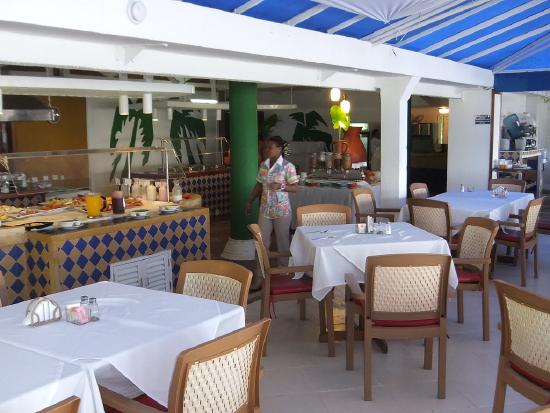

El menú del día. In Spain, restaurants often offer a Menú del Día. You pick a “Primero” and a “Segundo” and depending on the restaurant, some combination of “Postre,” “Bebida,” or “Pan,” is offered. They are an affordable way to enjoy a multi-course meal!
In a small group, designate one person as the mesero/a. The rest of you will dine at their restaurant. Using our restaurant phrases and the menu below, act out a restaurant scene in which everyone orders something to drink and something to eat.
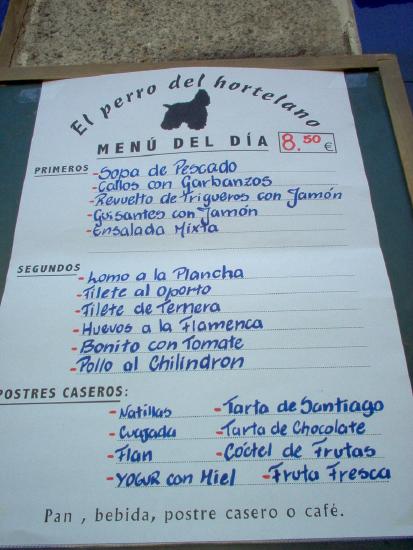
Los complementos directos
Direct Objects
Before we start with Direct Objects, it is important to review a couple of terms first:
Subject: The do-er of the action
Verb: The action
From there, the Direct Object receives the action. To easily identify the direct object of a sentence, ask yourself who or what is being “verbed.”
Yo compro flores en la floristería.


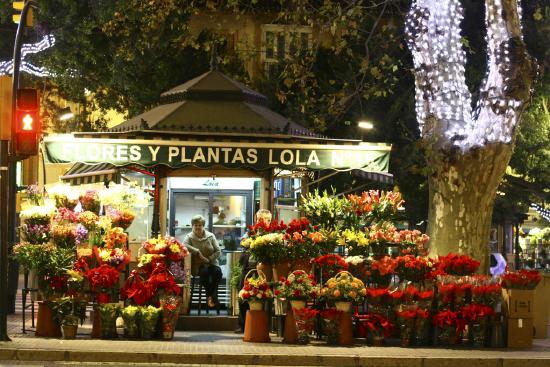
Actividad 7
Los complementos directos. Identify the Subject, Verb, and Direct Object in each of the sentences below using S, V, and DO.
1. Mi amiga escribe una novela.
2. Tú bebes mucho café, ¿no?
3. Yo hablo español en casa.
4. Antonio lee muchos poemas para la clase de literatura.
5. Héctor y yo preparamos tacos los martes.
The personal A refers to the use of an “a” when a person is the direct object of the sentence.*
Llamo a mis padres una vez por semana. I call my parents once a week.
Veo a Isabel en la clase de ciencias políticas. I see Isabel in Politcal Science class.
We do not use the personal a with the verb Tener or the verb Hay.
Yo tengo cuatro primos. I have four cousins.
Hay ocho chicas en la clase de karate. There are eight girls in the karate class.
Nadie (nobody) and alguien (somebody) count as “people” and require the personal a.
No conozco a nadie en esta fiesta. I don’t know anybody at this party.
*It is also used to introduce the direct object when there is room for confusion, and it is also used idiomatically (just because) occasionally.
We are not focusing on these uses in this lesson.
Actividad 8
1. Yo necesito ________ una mochila nueva.
2. Mi hermana quiere ________ un carro nuevo.
3. Llevo ________ Juanita al aeropuerto.
4. Los adultos no entienden ________ los niños.
5. Yo tengo ________ novio.
6. Hay ________ veintisiete estudiantes en la clase de francés.
7. Mi papá siempre llama ________ mi abuela los domingos.
8. Yo busco ___ mi profesor de historia. No está en su oficina.
9. ¿Tienes que comprar ________ muchos libros de texto para las clases?
Like in English, we use Direct Object Pronouns, or complementos directos, to replace the direct object after we have established what it is that we are talking about. We do this in order to avoid repetition in speech and in writing.
For instance, if I said:
I like to make scarves. I make scarves in the winter because they are cute and warm. I use wool yarn to make my scarves. Sometimes I make scarves as gifts…
My audience would think: Enough already! Scarves… we get it!
We also use the Direct Object Pronouns me and te initially when I receive the action and you receive the action. It will be clear by context.
Mi mamá me llama todos los días. My mom calls me every day.
¿Quién te llama? Who is calling you?
Mis abuelos me quieren mucho. My grandparents love me a lot.
To use los complementos directos, remember to conjugate the verb based on the person doing the action just like always.
Then, place the pronoun in front of the conjugated verb in a one-verb phrase.
If you have a two-verb phrase (one verb conjugated, the other in the infinitive), you can place the pronoun in front of the conjugated verb or attached to the end of the infinitive.
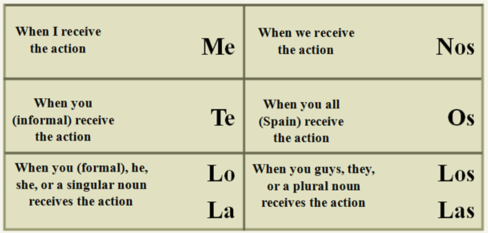
Actividad 9
PASO 1
Identificar el complemento directo. Read the following sentences and underline the direct object. In the blank, choose the pronoun that you would use to replace it.
1. Yo no bebo leche. ________
2. Mi hermana come mucho chocolate.________
3. José María necesita estudiar francés.________
4. Mateo y su hermano hablan italiano. ________
PASO 2
Usar el complemento directo. Now, rewrite each phrase using the Direct Object Pronoun.
1.________
2.________
3. (a)________
(b)________
4.________
Actividad 10
¡A responder! Repond to the following personal questions that use te with me. Audio Video
1. ¿Quiénes te llaman en tu cumpleaños?
________
2. ¿Quién te ayuda cuando lo necesitas?
________
3. ¿Quiénes te mandan mensajes de texto?
________

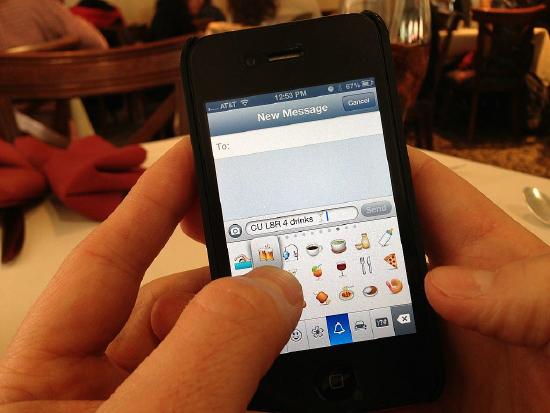
Actividad 11
El refigerador está vacío. You returned home from a weekend out of town, only to find that your roommate ate all your food. Use direct object pronouns to fill in the blanks as your roommate confesses to eating everything you had.
1. ¿Comiste todas mis sobras?
Sí, ________ comí.
2. ¿Bebiste toda la leche?
Sí, ________ bebí.
3. ¿Comiste la pizza entera?
Sí, ________ comí.
4. ¿Bebiste todo el jugo de naranja?
Sí, ________ bebí.
5. ¿Comiste todas las verduras?
Sí, ________ comí.
6. ¿Comiste toda la carne?
Sí, ________ comí.
El progresivo del presente
The present progressive is used to discuss things that are happening right now.
The English equivalent is the –ing.
In Spanish, two parts are required in order to construct this:
The verb Estar (conjugated based on who is doing the action)
And, the Gerund
This is the same as English:
Step One: I am
Step Two: studying.
PASO 1: Select the appropriate form of Estar.
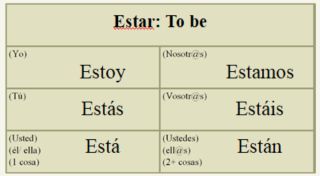
PASO 2: Use the gerund (also known as the present participle) for the action
For an –AR verb, take off the –AR and add –ando
Estudiar = estudiando Esquiar = esquiando Cocinar = cocinando
For –ER and –IR verbs, take of the ending and add –iendo
Comer = comiendo Salir = saliendo Hacer = haciendo
For –ER and –IR verbs that have a stem that ends in a vowel, change the –i in “-iendo” to a ‘y’ (-yendo) to avoid having three vowels in a row.
Construir = construyendo Leer = leyendo Creer = creyendo
For –IR verbs that stem-change, use an e-to-i or o-to-u stem change.
Servir = sirviendo Seguir = siguiendo Sentir = sintiendo (feeling)
Decir = diciendo Morir = muriendo (dying) Dormir = durmiendo
Actividad 12
¿Qué está pasando? Using the information provided, write a sentence about what is happening in the photos below.
1)
Dormir/
Porque tiene sueño

2)
Leer/
El periódico

3)
Bailar/
En una
fiesta
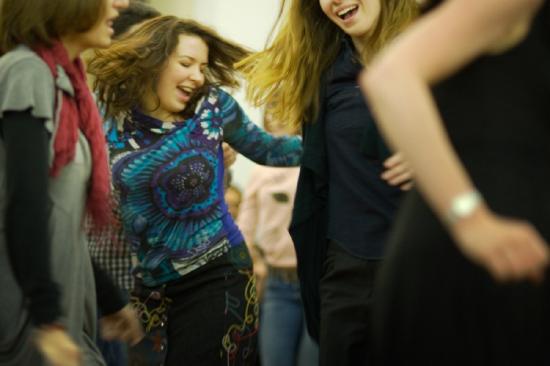
4)
Comer/
Cereales

1. Mi abuelo_____________________________________________________________________
2. Yo___________________________________________________________________________
3. Mis amigas ________
4. Mi primo, Álex, y yo ________
Actividad 13
¿Qué tiempo hace? Remember that several of our weather expressions use the present progressive to say what the weather is doing right now.
Paso uno: Answer the following questions about today’s weather in your city.
1. ¿Está lloviendo? ________
2. ¿Está nevando? ________
3. ¿Está granizando?________
Paso dos: Search online for today’s weather report for Bogotá, Colombia. Then, answer the same questions.
1. ¿Está lloviendo? ________
2. ¿Está nevando? ________
3. ¿Está granizando?________
Actividad 14
¿Qué están haciendo? In each sentence, someone is doing something right now. Draw a line to connect the activity to the most logical place where it would be happening.
1. Ana está haciendo ejercicio.
2. Lupe está leyendo una novela
3. Manolo y Pedro están estudiando
4. Los niños están comiendo helado
5. Yo estoy siguiendo a mi amigo de camino a su casa
6. Mi hermana está haciendo las compras
7. Rigoberto está tomando un examen
8. Paco está durmiendo
en la heladería
en el carro
en el sofá
en el gimnasio
en la biblioteca
en la cama
en el supermercado
en la clase
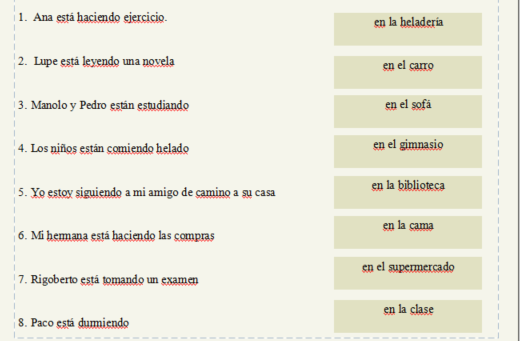
Actividad 15
¿Qué estás haciendo? Answer the following questions about what you and people you know are doing right now. If you aren’t sure what someone is doing, make a guess.
1. ¿Qué estás haciendo? ________
2. ¿Qué está haciendo la profesora?________
3. ¿Qué están haciendo tus padres?________
4. ¿Qué está haciendo tu mejor amig@? ________
5. ¿Qué están haciendo los demás estudiantes? ________


